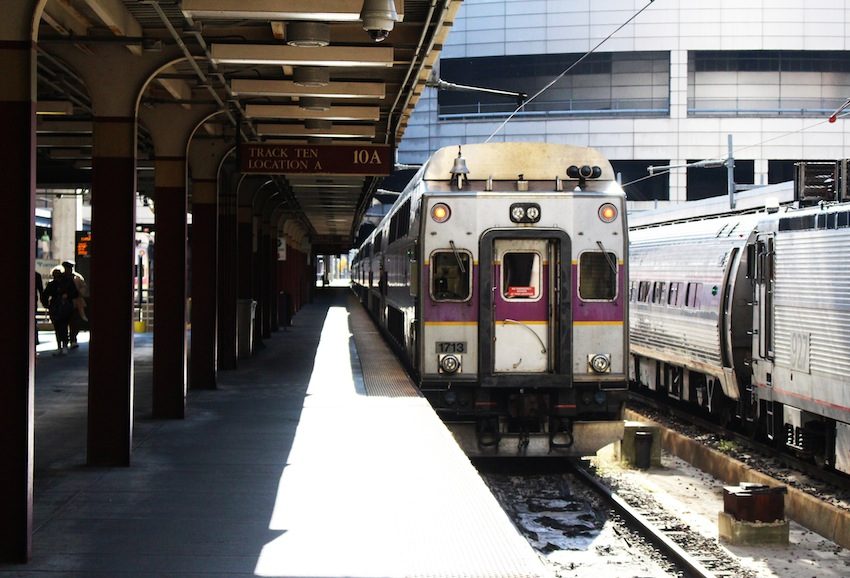MBTA to Use Motion-Detection Technology to Count Commuter Rail Riders

Photo by Margaret Burdge
The MBTA is looking for a new way to figure out just how many people are riding the commuter rail trains every day because, believe it or not, they’re not entirely sure.
According to the Associated Press, the transit agency will use motion-sensor technology at South Station for 30 days to see if it more accurately captures the number of people boarding the MBTA’s trains. Finding a more accurate way to count riders is important because, as it turns out, the MBTA doesn’t have a very good method. Counting riders isn’t straightforward because, unlike the T, riders don’t pass through a gate to get on and off the platforms. They simply board the train and either pay for a ticket or pass on their phone or pay a conductor for their fare. In Commonwealth Magazine this March, Steve Koczela does a good job outlining the various ways the MBTA tries to estimate its ridership. One method asks conductors to basically estimate a head count. Another just looks at how much fare money they collected. The various methods produce ridership numbers with wild discrepancies and inaccuracies.
One of many reasons it might be nice to have an accurate count of commuter rail riders: If the MBTA doesn’t know how many of passengers are riding the train, it also doesn’t know how many passengers are getting away with not paying a fare. As the Boston Globe reports, we rely on Keolis, the company that we contract to operate the commuter rail, to collect fares. Especially with all the delays this past winter, crowded trains can sometimes make it easy for people to get away with a free ride. If we don’t know how many people are doing so, we don’t know how much to fine Keolis for failing to collect. The MBTA is leaving money on the table, and lord knows it can’t afford to do that.
The problem is further complicated by the fact that Keolis doesn’t have a lot of incentive to collect those fares in the first place. The company can be fined $500 if a T inspector finds that a conductor hasn’t checked for a customer’s ticket. But the Globe explains:
It has become clear that MBTA inspectors haven’t been able to catch many violations, even though customers say the problem is not uncommon. In February, the T did not fine Keolis once for collecting fares, even though 73 people complained to Keolis about fare collection that month.
To really fix the fare collection problem, you’d need to renegotiate a contract with Keolis to give them stronger incentives to check every rider. At a Suffolk University panel this week, according to the AP, Transportation Secretary Stephanie Pollack noted that before the MBTA can increase the fines it levies on Keolis, the agency just plain needs to know how big a problem it has on its hands. And the only way to do that is to find a way to count passengers. It’l be interesting, then, to see whether motion-detection technology is the answer.


